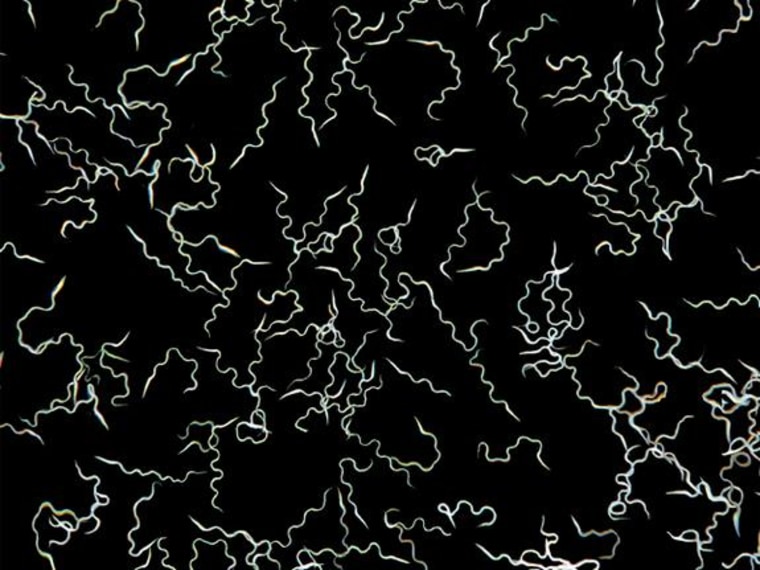Mosquitoes use scent-detecting molecules known as odorant receptors in their antennae. These sensors help mosquitoes "sniff out" sources of blood as part of their sense of smell, technically known as olfaction.
Now, researchers have discovered mosquitoes have these same molecules in their sperm.
Sperm sniffersScientists analyzed the mosquito species Anopheles gambiae, one of the most common carriers of malaria. They found odorant receptors on the whiplike tails of the mosquitos' sperm. These molecules help to spur the beating of the tails, and thus help control the movement of the sperm, the researchers said. [Sexy Swimmers: 7 Surprising Facts About Sperm]
"We know these molecules are very powerful tools for responding to chemical signals from the environment, but this work shows these molecules can also be co-opted to respond to chemicals inside the organism," said study author Laurence Zwiebel, a molecular biologist at Vanderbilt University in Nashville. In other words, molecules used in one part of the body can be co-opted or diverted for a role elsewhere in the body.
During the process of evolution, successful molecules are often reused after they have arisen. The researchers suspect that odorant receptors may have evolved first in the reproductive system of insects and then were adapted to help form the foundation of the mosquito's complex sense of smell.
"Certainly, reproduction is a much more basic process than olfaction," Zwiebel told Live Science.
Female mosquitoes live for about a month and mate only once. They store the sperm of their mates in special organs called spermathecae. The females then suck blood to get the basic compounds they need to produce eggs. This is why they bite humans and other animals and, in so doing, help spread lethal diseases such as malaria, yellow fever and dengue fever. Once the eggs have developed, they are fertilized by the sperm stored within the female's reproductive tract.
"The sperm may need a chemical signal to become ready for fertilization," Jason Pitts, a researcher at Vanderbilt University, said in a statement. "There are reports that within one day after insemination, the sperm begin swimming around in the spermathecae. There must be one or more signals that activate this movement, and our findings suggest that odorant receptors may be the sensor that receives these signals."
The researchers also found these odor-detecting molecules in the sperm of the yellow-fever mosquito Aedes aegypti, the Asian tiger mosquito Aedes albopictus, the fruit fly Drosophila melanogaster and the jewel wasp Nasonia vitripennis. The researchers said this finding suggests that odorant receptors have a general function in sex across most, if not all, species of insects.
"These molecules help bring sperm and eggs together in insects," Zwiebel said.
These results are similar to recent work that discovered scent-detecting molecules in human sperm. This may represent an intriguing example of convergent evolution — in which different, and perhaps only distantly related, species evolve structures with similar functions, typically to solve similar problems.
The scientists detailed their findings online Feb. 3 in the journal Proceedings of the National Academy of Sciences.
- Charles Choi, LiveScience Contributor
This is a condensed version of a report that appeared on LiveScience. Read the full report.
Follow Live Science @livescience, Facebook & Google+.
- Gallery: Drop-Dodging Mosquitoes
- Sting, Bite & Destroy: Nature's 10 Biggest Pests
- The 12 Weirdest Animal Discoveries
Copyright 2014 LiveScience, a TechMediaNetwork company. All rights reserved. This material may not be published, broadcast, rewritten or redistributed.
